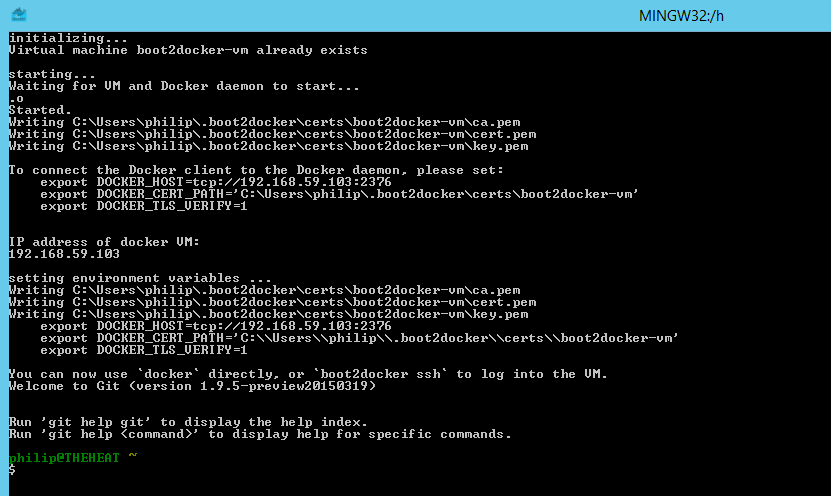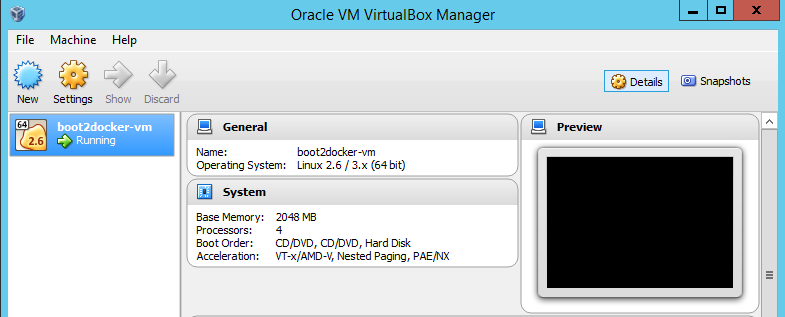How-To: Install Docker on Windows
My environment: Windows Server 2012 R2. Slightly different steps may be required with other versions of Windows.
Pretty straightforward, the only tricky parts here are about Hyper-V and finding out the IP address of the VM.
With regards to the latter there is a lot of misleading information on the web.
1. Make sure Hyper-V is not running.
If it does, it will prevernt the VirtualBox VM to start and you will get mysterious errors. Same goes if you use VMWare or any other hypervisor other than VirtualBox.
If you do need to have both Hyper-V and VirtualBox, Scott Hanselman wrote about some voodoo magic you can do to easily switch between the two. I haven’t tried it.
2. Download and install Docker for Windows.
-
Download and install Boot2Docker from here: https://github.com/boot2docker/windows-installer/releases/latest
-
Install everthing
-
Tick “yes I trust that thing” when asked to install network driver. It’s required by VirtualBox.
-
You should have two icons added to the desktop:
- Boot2Docker Start
- Oracle VM VirtualBox
3. Run Boot2Docker
If everything goes well, you should see:
- bash command window should open
- after a bit, it should have ouput similar to the one shown below
- take note of the line which says
DOCKER-HOST, it should have the IP address of the docker VM. -
if you open Virtual Box, you should see
boot2docker-vmrunning there.
4. Post Install
A couple of useful things to know:
-
You can run as many instances of
Boot2Dockeras you want. It’s just a command prompt. -
Finding out the IP address of the docker VM (and things which run within it). Several options:
-
from
Boot2Dockercommand prompt runboot2docker.exe ip. This will show the IP address:$ boot2docker.exe ip 192.168.59.103 -
Look for
DOCKER-HOSTstring when you startBoot2Docker:... starting... Waiting for VM and Docker daemon to start... .o Started. ... To connect the Docker client to the Docker daemon, please set: export DOCKER_HOST=tcp://192.168.59.103:2376
-
-
Security and the images. One thing worth remembering is that when you say something like
docker run some-imageby default it will try andsome-imagefrom external repository. Which repository it is, and who built that image with what is a good question. So probably a good idea to install only “trusted” images.

